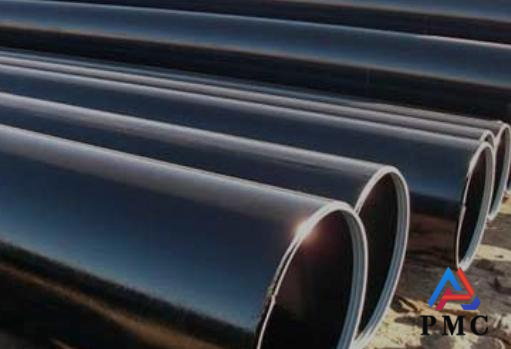
ASTM A106 Carbon Steel Pipe Introduction
ASTM A106 carbon steel pipe is a common American standard carbon steel material steel pipe. This standard specifies the chemical composition and mechanical properties of carbon steel to ensure that the material properties meet the requirements of various applications. ASTM A106 carbon steel pipe is mainly composed of carbon, manganese, phosphorus, sulfur and other elements. The carbon content varies according to the specific specifications, but it usually belongs to the low carbon steel range. In addition, the steel pipe also contains a certain amount of alloy elements such as silicon, copper, nickel, and chromium to improve the corrosion resistance, high temperature resistance and other properties of the steel pipe.
The manufacturing processes of ASTM A106 carbon steel pipe include hot rolling, cold rolling or cold drawing. Hot rolled steel pipes usually have higher dimensional accuracy and surface quality, and are suitable for conveying fluids, making structural parts, etc. Cold rolled or cold drawn steel pipes have higher mechanical properties and accuracy, and are suitable for occasions with higher requirements for dimensional accuracy and mechanical properties of steel pipes.
ASTM A106 standard specification
The ASTM A106 standard is mainly applicable to seamless steel pipes for high temperature use in the range of 1/8 inch to 48 inches (DN6 to DN1200). The nominal wall thickness of these steel pipes must comply with the ASME B36.10 standard.
The content of ASTM A106 standard covers the type of pipe, size range, service conditions, raw materials, chemical composition requirements, processing methods, heat treatment methods, mechanical properties (such as tensile strength, yield strength, elongation, etc.), specific content of chemical composition, size and allowable deviation (such as pipe diameter, wall thickness, length, etc.), test methods (such as chemical analysis, tensile test, impact test, etc.), as well as marking and packaging requirements.
In addition, the ASTM A106 standard specifically specifies the mechanical properties requirements, chemical composition, shape, size and allowable deviation of seamless carbon steel pipes produced by cold drawing (cold drawing) or hot rolling processes. This standard applies to low-carbon steel pipes used in pipeline systems in the fields of heating, gas supply, oil and gas transmission, including steel grades such as A106 GRB and A106 GRC.

ASTM A106 carbon steel pipe material grades
The ASTM A106 material standard contains three grades: A, B and C. The following are the specific descriptions of these three grades:
ASTM A106-A: This grade of steel pipe is similar to the domestic 10# steel or 20# small diameter seamless steel pipe. It is mainly composed of C and Si components, and the tensile strength grade is 330MPa.
ASTM A106-B: This grade of steel pipe is similar to the domestic 20# material or Q235 small diameter seamless steel pipe. It contains C, Mn and Si components, and its tensile strength grade reaches 415MPa.
The yield strength is not less than 240MPa, and the B-grade C% in the chemical composition is not greater than 0.30, Mn% is 0.29-1.06, Si% is not greater than 0.10, Mo% is not greater than 0.15, Cr%, Cu%, and Ni% are all not greater than 0.40, and V% is not greater than 0.08.
ASTM A106 carbon steel pipe applications
ASTM A106 carbon steel pipes are widely used in many fields due to their good comprehensive performance. In the field of heating and gas supply, they are often used as the main material for urban centralized heating pipe networks and natural gas transmission pipelines, safely and stably delivering hot water and natural gas to thousands of households to meet the daily needs of residents. In the oil and gas transportation industry, they are used for long-distance transportation of crude oil and natural gas, and can withstand high pressure to ensure efficient and safe transportation of energy.
It is also commonly used in the petroleum and chemical industries. It can be used as various process pipelines in the process of petroleum refining and chemical production to transport crude oil, refined oil, chemical raw materials and intermediate products, etc. It can adapt to complex chemical media and working environments. In the electric power industry, it is often used in steam pipes and water supply pipes in thermal power plants to withstand high-temperature and high-pressure steam and ensure the normal operation of power generation equipment. In the construction industry, it can be used in building water supply and drainage systems and heating pipe systems as main pipes or branch pipes to provide stable water supply and drainage functions, as well as heating delivery services for buildings.
Read more: Factors affecting the Service Life of Carbon Steel Pipes


